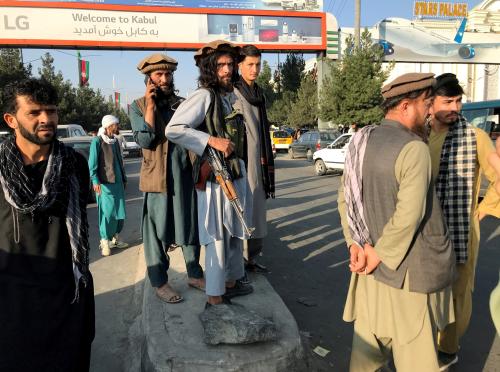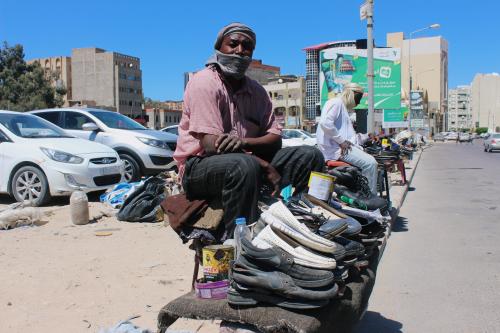Your Excellency Ambassador Strohal,
Distinguished Delegates of OSCE Participating States,
Ladies and Gentlemen,
In the OSCE region today, there are some 3 million people forcibly uprooted from their homes by conflict and human rights violations but who, unlike refugees, remain within the borders of their own country and, as such, are called “internally displaced persons”. Many of them are in conditions of destitution and legal or physical insecurity, which in several cases have persisted for years, even decades, in the absence of durable solutions.
Internal displacement is a broad problem affecting 13 countries across the OSCE region, in the Balkans, Cyprus, Turkey, the South and North Caucasus, and Central Asia. As OSCE Participating States have recognized, “displacement is often a result of violations of OSCE commitments, including those relating to the Human Dimension.” Moreover, its impact often extends beyond the uprooted populations to disrupt the stability not only of the state concerned but also of neighbouring countries. A regional approach therefore can be warranted and valuable.
The efforts of regional organizations in addressing internal displacement have been strongly encouraged by the United Nations. Resolutions of the General Assembly and the Commission on Human Rights have called upon regional bodies, including the OSCE, to strengthen their activities in this regard and expand their cooperation with the Representative of the Secretary-General on Internally Displaced Persons. In particular, these UN bodies have encouraged regional organizations to make use of the Guiding Principles on Internal Displacement and have expressed appreciation to the increasing numbers of regional bodies that are applying the Principles as a standard.
The Guiding Principles on Internal Displacement are the first international standards for internally displaced persons. They set forth the rights and guarantees for internally displaced persons in all phases of displacement: prevention; protection and assistance during displacement; and during voluntary return or resettlement and reintegration. Since their presentation by the Representative in 1998, UN bodies have welcomed the Guiding Principles, recognized them as an important standard and useful tool for addressing internal displacement, and have encouraged their wide dissemination, promotion and application by states, regional bodies and other actors. OSCE countries have all formed the international consensus reflected in the UN General Assembly and Commission on Human Rights resolutions on this issue.
A number of OSCE countries are finding the Guiding Principles to be a useful framework for addressing their own situations of internal displacement. To give just some examples, the Government of Armenia has translated the Guiding Principles into Armenian and disseminated this document to all relevant officials. The Government of Georgia has indicated that it will bring its electoral laws into compliance with the Principles so that IDPs can fully and fairly exercise their right to vote in all elections. Croatia has expressed its “full support” for the Principles. In the Russian Federation, the Representative, who visited the country last month, was pleased to hear from the authorities the importance they attach to the Guiding Principles. I would note that the Representative has also formally discussed the Principles with OSCE Participating States at a Supplementary Human Dimension Meeting on Migration and Internal Displacement, held in 2000.
The OSCE, more than most regional organizations, has tremendous potential for dealing with the problem of internal displacement. It also has the responsibility, as underscored by Participating States in their decisions and commitments on the issue of displaced persons. In recent years, the OSCE has taken a number of important steps to address internal displacement. However, there remains significant scope for the OSCE to make greater use of its potential as a key regional player, with a unique mandate and presence on the ground, to give greater priority to the issue of internal displacement and to address it in a more systematic and coherent manner.
In particular, the Brookings Institution-Johns Hopkins University SAIS Project puts forth five recommendations:
First, because there are 3 million internally displaced persons in the OSCE region, many in conditions of destitution and insecurity, the problem of internal displacement should be given high priority as a human dimension issue by the OSCE. In this connection, it should, on a systematic basis, review situations of internal displacement at Human Dimension Implementation and other relevant OSCE meetings. Strategies will need to be developed and implemented for ensuring assistance, protection and durable solutions for internally displaced populations as well as for preventing internal displacement by addressing its root causes.
Second, to reinforce the OSCE’s role, the issue of internal displacement should be mainstreamed throughout the Organization, including in its legal review processes, capacity-building initiatives, election monitoring activities, field missions, protection of minorities, and gender projects. To promote integration of the issue, the OSCE should systematically train its staff, both at headquarters and in the field, in the subject of internal displacement.
Third, the Guiding Principles on Internal Displacement, which bring together in one document all the international norms relevant to internally displaced persons, should be formally acknowledged by the OSCE as a useful tool and standard for addressing internal displacement and used as a framework for policies and activities pertaining to internal displacement, including the development of laws and policies at the national level. The OSCE should also encourage the dissemination and application of the Guiding Principles by its staff, both at headquarters and the field, and by Participating States.
Fourth, greater support should be given to OSCE/ODIHR to enable it to expand its activities in the area of internal displacement. In particular, OSCE/ODIHR’s migration unit could usefully serve as a focal point within the OSCE for internal displacement issues. To carry out this role effectively, the unit should be reinforced with additional resources.
Fifth, the OSCE should enhance its collaboration with the Representative of the UN Secretary-General on Internally Displaced Persons and other relevant organizations and offices, including the UN High Commissioner for Refugees (UNHCR), the International Organization for Migration (IOM), the IDP Unit in the UN Office for the Coordination of Humanitarian Affairs, the UN High Commissioner for Human Rights, as well as regional bodies such as the Council of Europe and the European Union, in addressing internal displacement in the OSCE region.
In conclusion, the scale and severity of the problem of internal displacement in the region make it important for the OSCE to give greater priority and more systematic attention to protecting the rights and finding durable solutions for internally displaced persons and, ultimately, also to preventing an increase in their number. Doing so would seem to be not only appropriate from a humanitarian perspective but also critical to this region’s collective peace and security, as well as very much in keeping with the commitments already undertaken by Participating States.


Commentary
Migration, Refugees and Displaced Persons
October 10, 2003